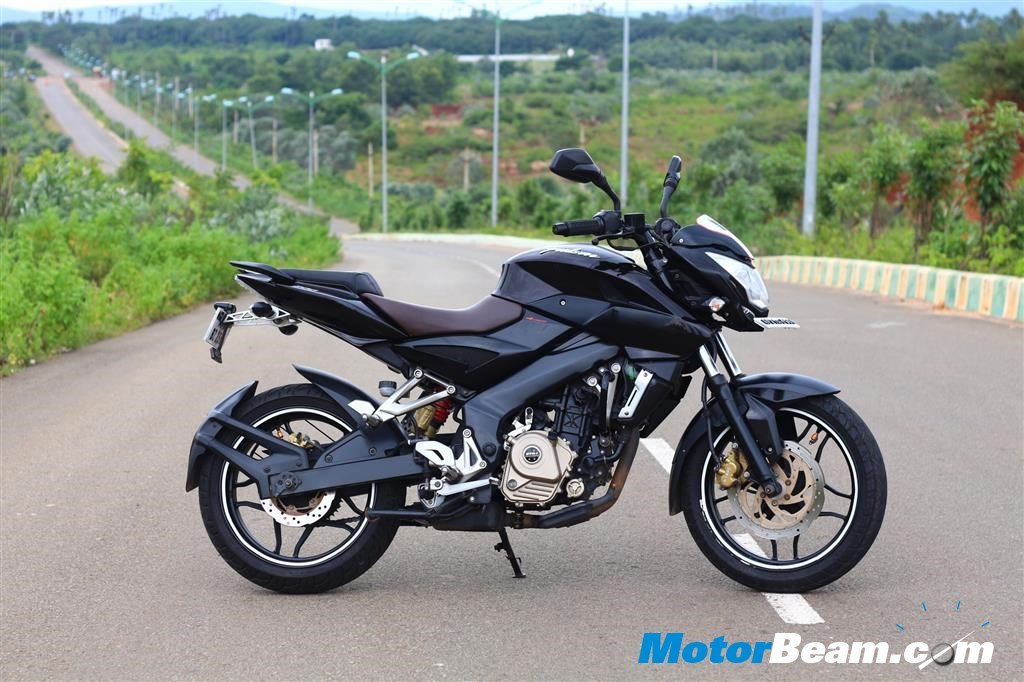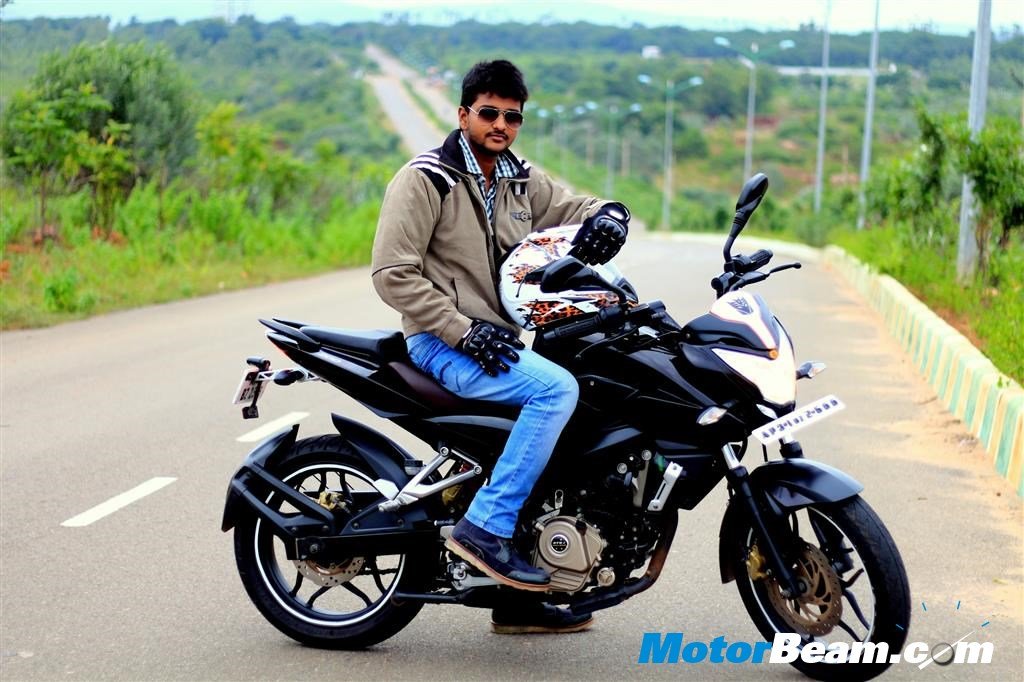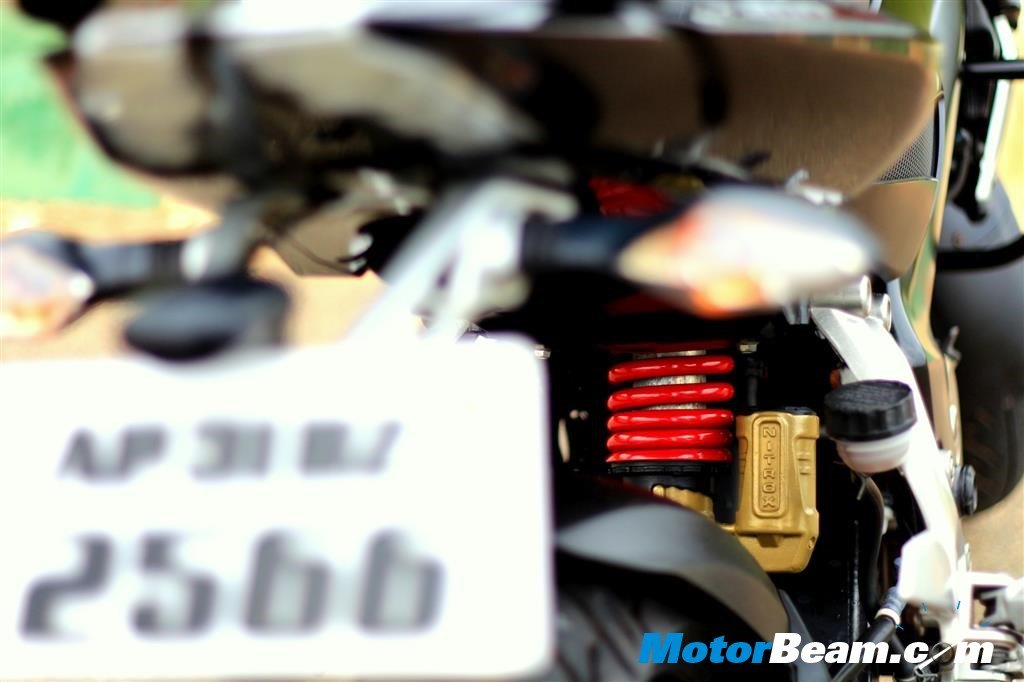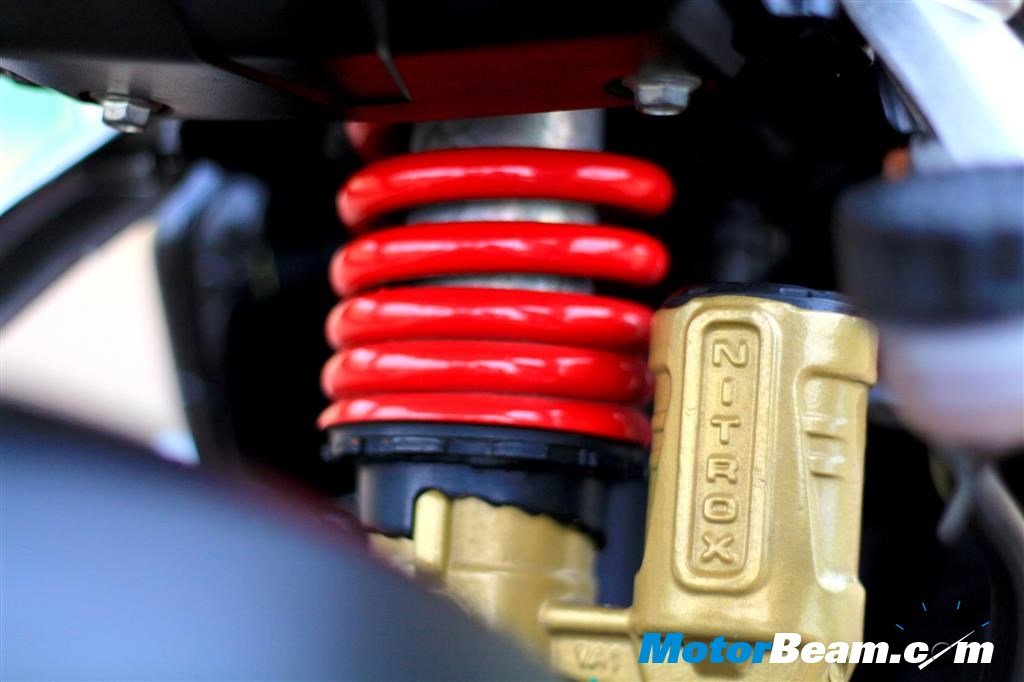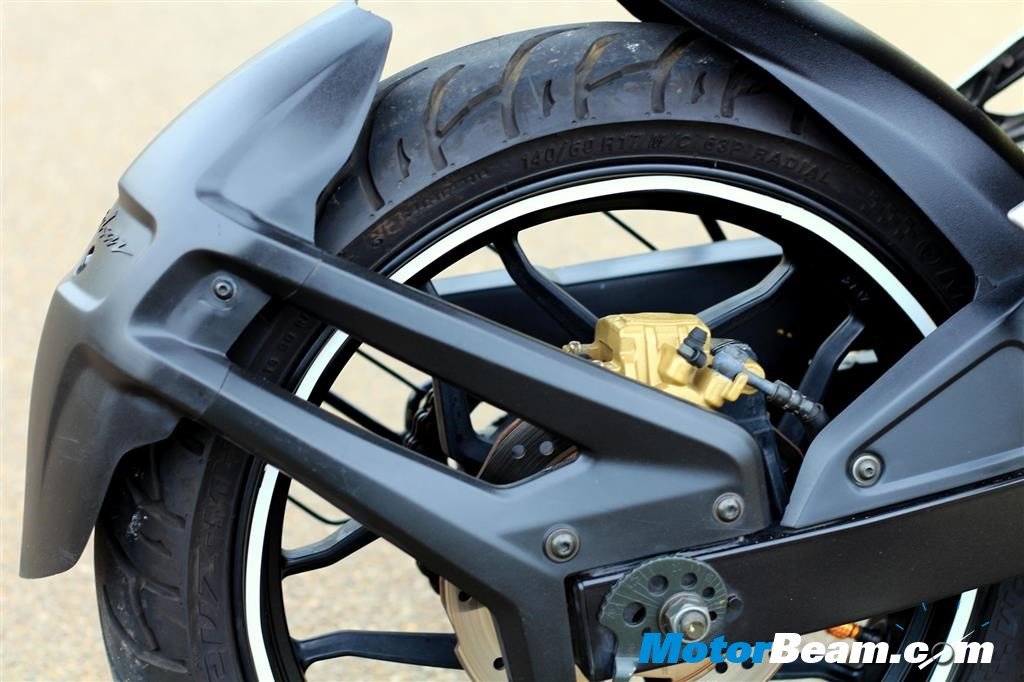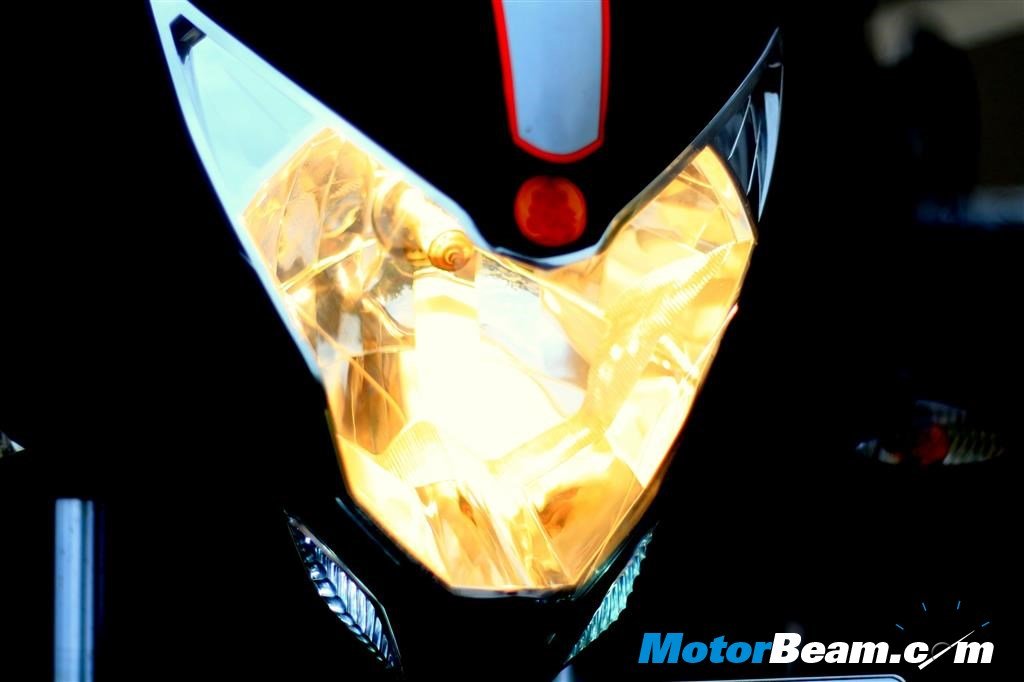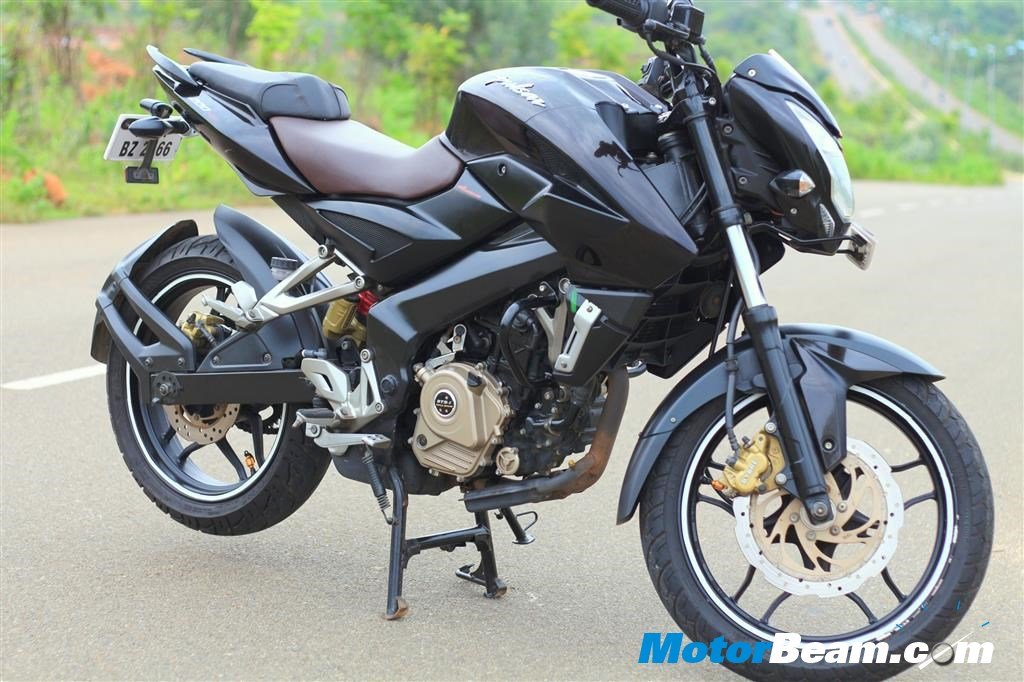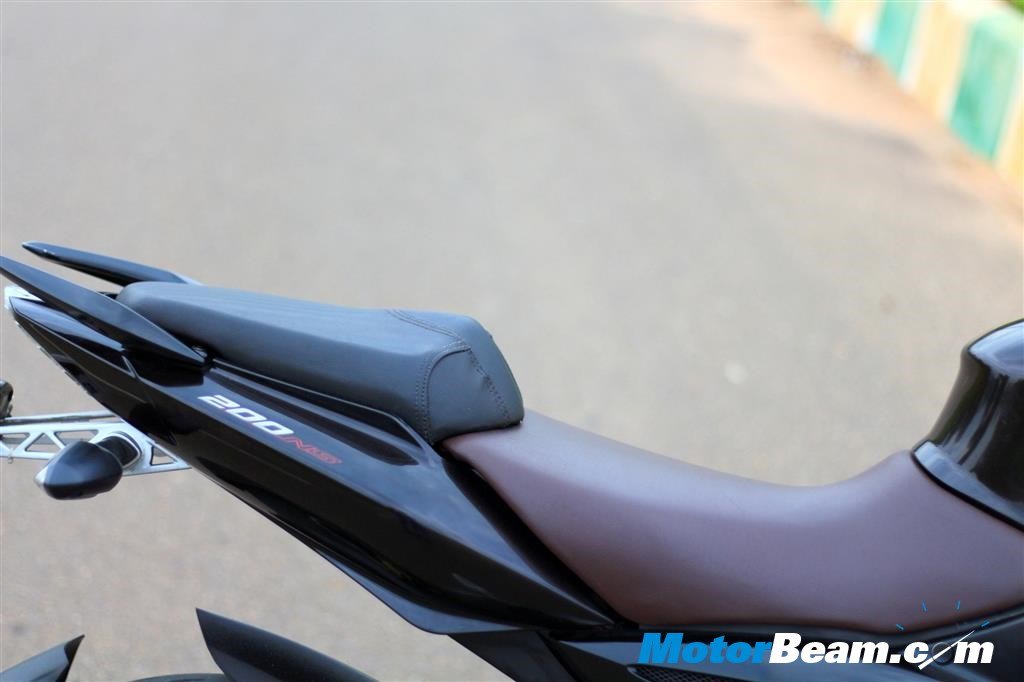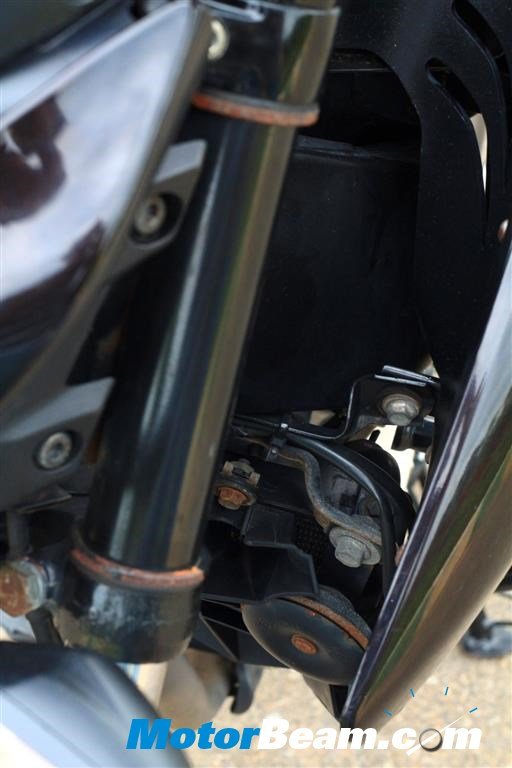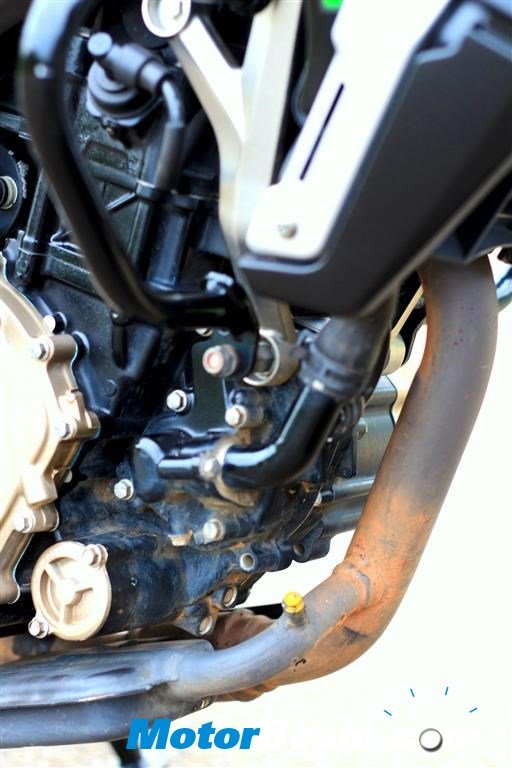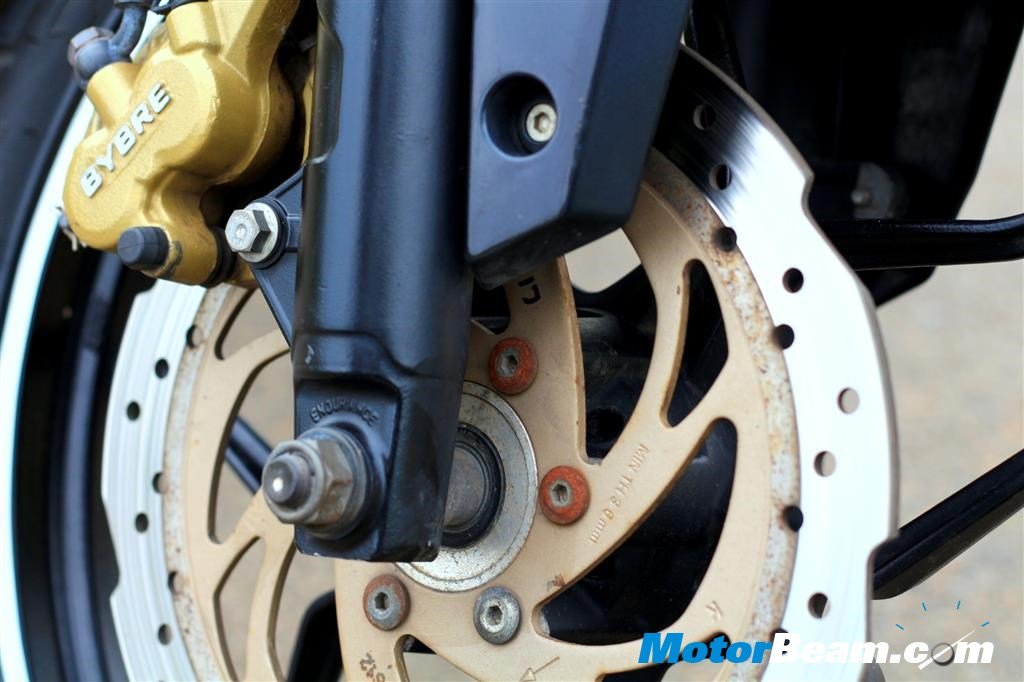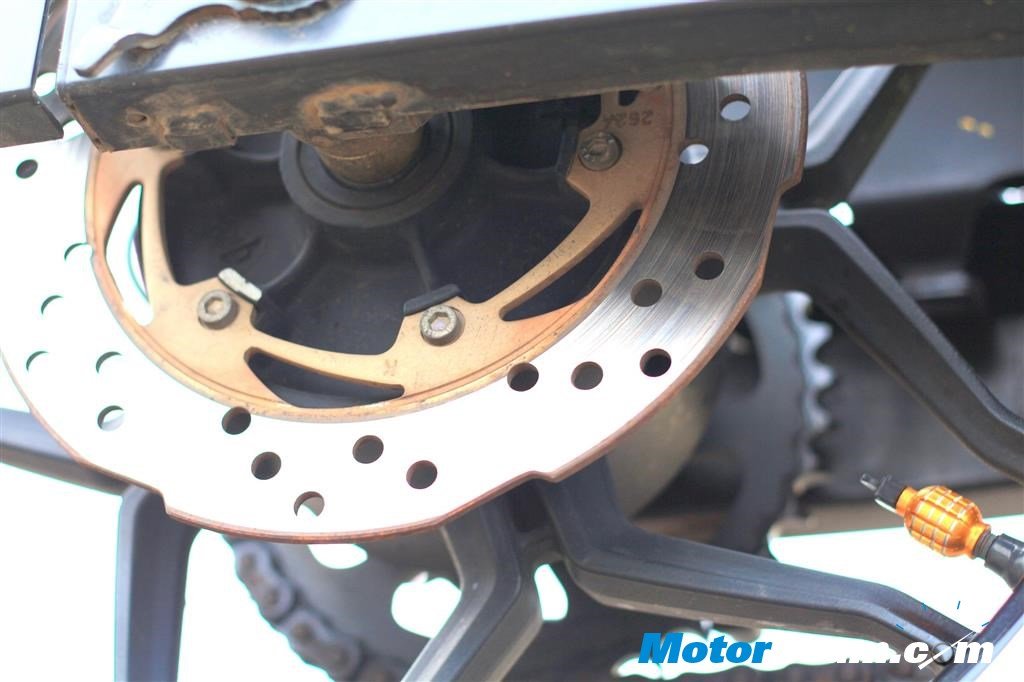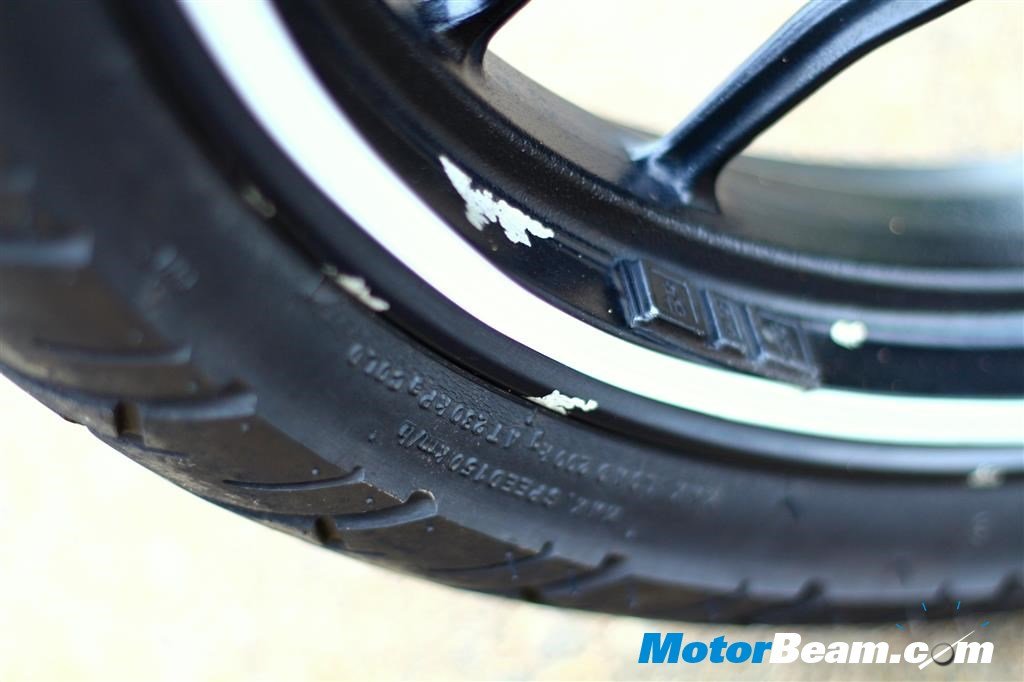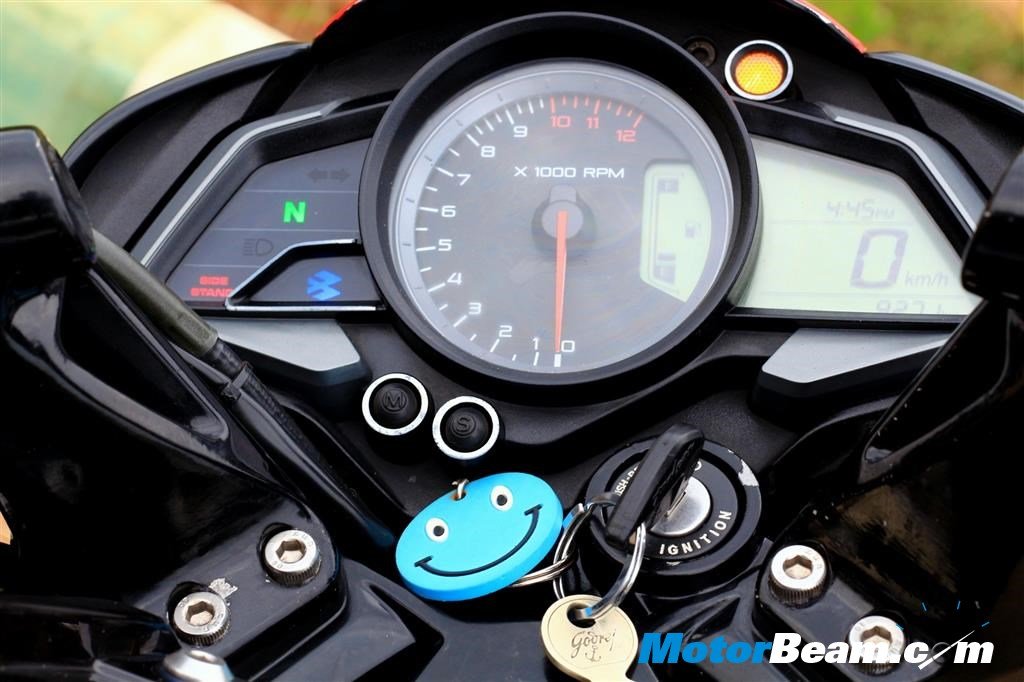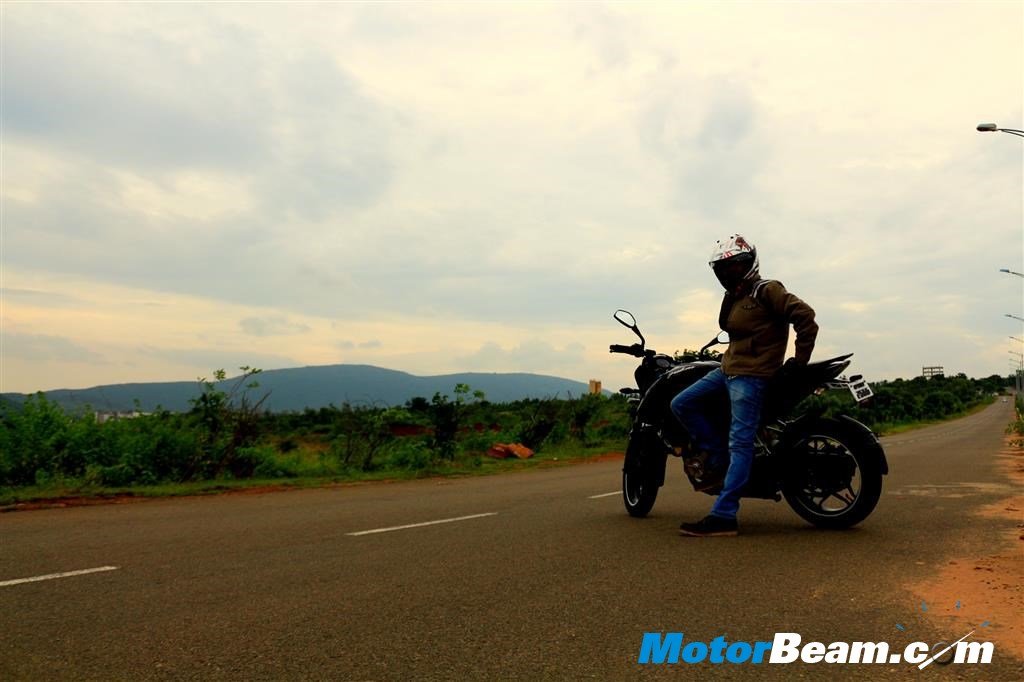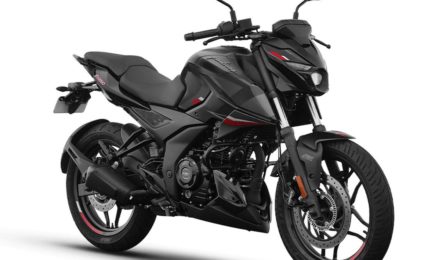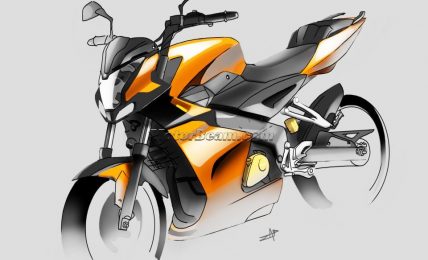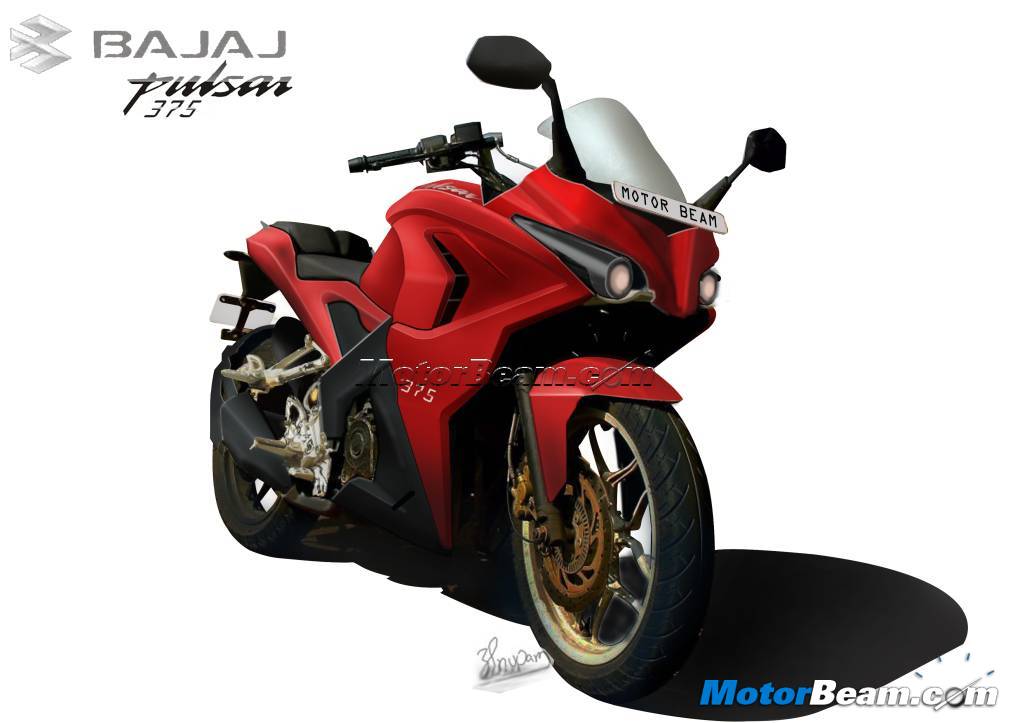Pulsar 200 NS — 14,000 happy kms with my Black Beast!
How the journey with my beast began – Way back in 2011, when I was 18 years old, I had my first bike a Honda Aviator which my Dad got me for daily commuting to college. It was surely a trusted machine that didn’t disappoint me at any speck of time and in January 2014 when I did upgrade to my Black Beast, I had to sell my Aviator off for sentimental reasons at home, it was bad luck, so then my hunt began for an upgrade as I was seriously in need of one. I was looking at getting a Yamaha FZ-S (Battle Green) for which I had limited my budget to Rs. 90,000/-, but then there was a call from my cousin who knew my search came up saying that his friend was selling off his year old Pulsar 200 NS. So I was called to have a look at it, presuming the bike to be a rough handled one being a naked sport bike. To my surprise, I found the bike to be scratch less, super smooth on ride and also the odometer had clocked just 4950 kms. Later I came to know that he initially got this beast for short commuting but he was posted in a college soon after as a faculty which was 100 kms away and hence didn’t unleash it for a long time.
On inspection of the bike thoroughly (I took a trusted local bike mechanic too), found everything to be perfectly in line, the button of tyres was also there (I found the bike to be that good . Coming to the deal, being a known chap to my cousin, it was finalised at Rs. 60,000/-. I found it to be good enough within my budget and readily paid it. So my journey with this baby beast began from that day. The first thing I did the very next day was gave the bike at Bajaj Service (the warranty was still there for a year more) for a paid service where everything was checked out and certified good enough to rip it hard.
Design – Even after two years of launch, the Pulsar 200 NS is still a head turner. The fuel tank holds up to 12-litres of petrol and the beautiful crafted side panels give it a stunning look. The overall look is a step up with the beasty headlamp that puts in a aggressive stance. The underbelly exhaust surely helps in maintaining weight distribution equally. The overall profile is subjected to change personally but I liked it so much to my taste. The design of this bike is surely a step up for any Indian bike, considering so many firsts are attached to it.
Power and Performance – A major advantage that Bajaj could pump out with KTM was access to Duke 200 technology. So it can’t be denied that the Pulsar 200 NS has the soul of a KTM engine, in fact very less things differ from a Duke 200. Coming to the power rated at 23 BHP, this beast always wants to get revved harder, the first two gears seem engaging with short ratios where in employ the third gear which has a longer aspect to pace up quick. The engine pulls away cleanly from low RPMs and is easy to operate in dense traffic. Overtaking is simple in any gear unless you are competing with a 500cc or more class bike. Acceleration is quick and the engine sounds good once past the 6000 RPM mark. Revving to about 9500 RPM in every gear will bring up the 120 km/hr mark quickly and progress beyond that will take some time.
Personally, I clocked 146 km/hr (speedo indicated) on the NH5 but later read about the speedo error that the true speed is 136 km/hr even though the speedometer indicates more. The gearbox features tall ratios and hence in-gear acceleration suffers a bit. The advantage of this gearing is a somewhat relaxed cruising nature of the engine and easier ride-ability in traffic. While the 6-speed gearbox is significantly better than the earlier 5-speed units, it still leaves some room for improvement. There will be moments when one might get that odd false shift to neutral coming down from second to first. Overall shifting is smooth and supports quick-shifting well. Another technology setting it apart from any other bike is the Triple Spark Technology which facilitates a cleaner combustion and friendly emission levels too, of course also adding to the fuel efficiency.
Handling – The sharp looks of the Pulsar 200 NS do match its on-road handling. Probably the best handling naked bike in the market now and it is easy to flick it around on any terrain. Throwing it into corners is absolute fun. The 200 NS though is better composed over a series of turns or sharp braking. The light weight pressed steel frame greatly enhances the agility of the 200 NS. Nitrox mono-shock absorber at the rear adds further to the bike’s handling and design attributes. The first thing one notices, when astride the motorcycle, is its significantly stiffer suspension set-up than the earlier Pulsars.
I have personally set it to the first step on the rear monoshock. It does take the bumps well but potholes do feel bumpy with this kind of setup. My suspension set up choice suits my riding style and height too.
Braking and Tyres – ByBre offers good braking on the Pulsar 200 NS, the front and rear are both provided with petal discs which perform really well in all types of weather. But the performance of these discs is hindered by the Eurogrip tyres which are given as stock with this bike. Probably Bajaj might have made this to keep the costs down but there is a serious need to upgrade to better ones. I met with an accident in March only because of these Eurogrip tyres which made my bike slip in a hard braking situation. So I learnt my lesson then and even though I have read it before, a personal experience made me realise it better and upgraded my rear tyre to MRF REVZ 140/60. The stock tyre is 130/70 but I suggest you to go for 140/60 which fits without any glitches and is a better performer on the road.
Fuel Economy – This is the most important aspect which all we Indian buyers look at initially. Well I was able to extract the following figures, tested reserve to reserve fuel gauge.
** To my riding conditions as far as the revving is within those limits constantly.
• Engine Oil – Bajaj 10000 DTS-I
• Gear Shifting at 4000 RPM.
• Rear tyre 140/60.
• Without a pillion rider
• Engine oil change every 5000 kms.
• Tyre pressure – 28 PSI (Front), 36 PSI (Rear),
Modifications Done –
1) Rear Tyre – MRF REVZ 140/60 onto the stock rim which cost Rs. 3300/- from the local dealer.
2) Parking Lights – LED white lights of 7 SMD bought from eBay India for Rs. 200/-
3) Centre Stand – It’s a useful after-market accessory which is necessary at times when the tyre gets flat (we have tubeless tyres but still a centre stand would facilitate, also while changing a tyre to a new one) or the bike needs some maintenance (sprocket change, tyre change, disc brakes repair). Cost Rs. 500/- from the Bajaj service centre itself.
4) Helmet Lock – Helmet lock bought for Rs. 80/- fitted onto the left crash guard.
5) Seat Foam and New Leather – The stock rider seat is hard rock which will surely soar up your backside in no time and hence I got some foam placed over the stock seat and got it layered with new leather stapled tightly over it. Cost Rs. 200/- for rider’s seat alone.
What I Love About My Pulsar –
• 200cc engine, liquid-cooled, 23 HP, triple spark – these really sound good and are no less to its actual performance on the road.
• Delivers a good fuel efficiency despite its performance making it a daily commuting bike for young professionals and college going students who are within this budget of Rs. 1 lakh.
• Seating position is upright which is very commuter-like but visually appears sporty (I made a long journey on my bike Vishakhapatnam – Chennai in 15 hours with minimal breaks for light snacks and nature’s calls. I had body ache after that hefty journey but I wasn’t much tired, all credits to the riding position).
• A very reliable machine for long rides (riding position, fuel efficiency, performance, liquid-cooling, auto shut off when engine gets heated up beyond limit), though it lacks a windshield.
• Powerful 55W headlamp lights up the road giving a clear vision.
• Easy to read speedometer with all the needed readings, a clock and two trip meters too.
• Friendly on pocket for the on-road price its available at and less service costs (Bajaj is known for cheaper spares and service costs due to heavy localisation).
• It does drive you the way you throttle it (rev it hard and it starts flying in a flash of time). Acceleration is too good and it takes 5 seconds to reach 60 km/hr and 10 seconds to reach 100 km/hr.
Negative Aspects –
• Rusting Issues –
At the telescopic forks –
At the engine belly –
At the front disc brake where the bolts are badly rusted –
At the rear disk and swingarm –
• Stock Eurogrip tyres lack grip on wet terrain and lack confidence, upgrade strictly recommended.
Cracks of the stock Eurogrip tyres clearly pop up and the paint near the rims peeled off.
• The Fuel gauge never shows the accurate level and it varies as per the elevation on which the bike is parked. Paint gets peeled off near the key slot and handle bars if a metal key chain is used.
• Need to keep the throttle revved up when igniting for the first time daily.
• Pillion rider ends up with a back-ache when travelling beyond 20 kms at a stretch.
• No under-seat storage other than for bike documents and tools. Tank is also not that symmetrical to have a tank cover (it spoils the appeal of the bike too).
• Service centre is top notch but the technicians are not well-trained. Here in Visakhapatnam, there are only two guys who are dedicated for the Pulsar 200 NS, any minor glitches like sounds I notice after service, they just escape saying the bike is designed so.
• This bike is only for those who ride solo most of the times.
• The height of the bike makes it set only for riders of height 5″7′ or more. Short people will find it difficult to ground their feet sitting on the bike, it’s on the lighter side when cruising but at stop it does bother.
• Low resale value (this did save me a lot actually).
Final Verdict
Looking at all the things it carries, it is still a steal in the market after two years of launch. Its chief rival, the KTM Duke 200 from the same stable does offer more but now it comes at a cost which is Rs. 50,000/- more, the Pulsar 200 NS is still the best value for money bike available today for Rs. 1,02,300/- (on-road). Well there are bikes which compete with this beast such as the Yamaha R15 V2.0, KTM Duke 200, Honda CBR150R and of course its sibling, the Pulsar 220. But given the price, technology, performance and fuel Efficiency it is packed with, the Pulsar 200 NS does surely sound well at least until its elder brother the Pulsar 200 SS arrives in the market (the Pulsar 200 NS is still selling in equal numbers with other competitors in this range).
If you just want to have some fun, mixed along with daily commuting then this is the beast for you, but when you need sheer performance and true racing DNA then many other bikes are available at a premium of Rs. 30,000-50,000/- over this motorcycle.


